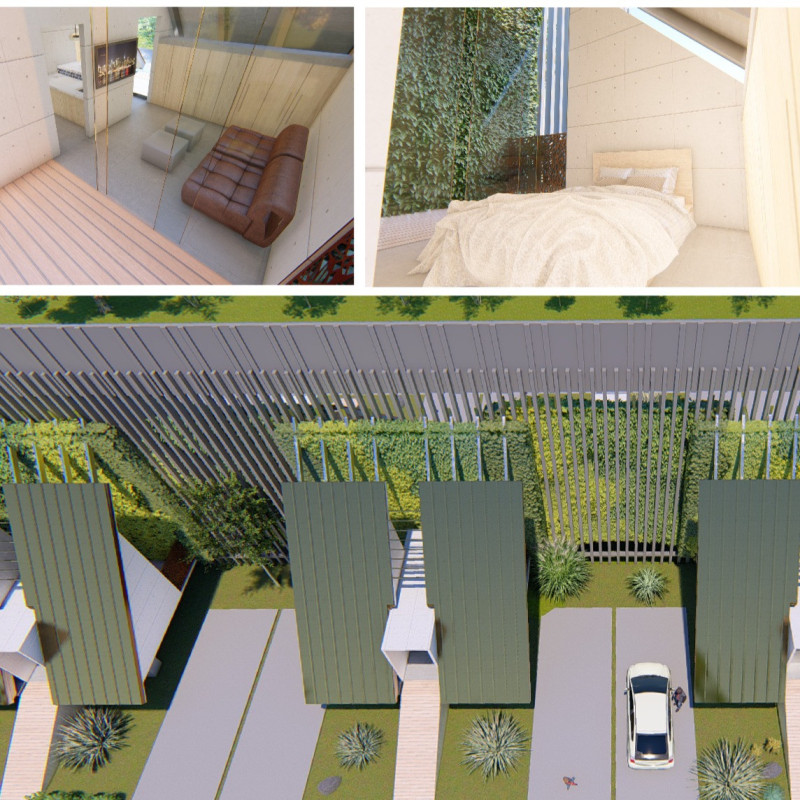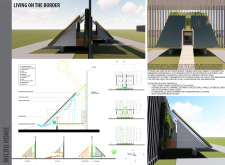5 key facts about this project
### Project Overview
The architectural proposal for a micro-home development located adjacent to a border aims to address the complex social, political, and cultural dynamics of border areas. It seeks to redefine living spaces in relation to their environments by integrating innovative architectural solutions and sustainable practices, thereby creating a unique residential experience that reflects the distinctive context of border living.
### Architectural Configuration and Sustainability Measures
The micro-homes are organized in a linear arrangement that aligns with a 10-meter high steel border wall. This configuration establishes a spatial dialogue, positioning the residences as facilitators of cultural interaction, rather than as mere physical separations. The design features sloped roofs for effective rainwater harvesting, addressing sustainability while also minimizing heat gain typically associated with flat roofing. Passive ventilation is a key feature, with large openings and strategically placed flaps enhancing airflow, which reduces reliance on mechanical cooling systems.
The selected materials reinforce durability and efficiency; galvanized steel beams and prefabricated metal framing ensure rapid construction and resilience to adverse weather conditions. Interior gypsum wall finishes provide a modern aesthetic, while the Kingspan roof system enhances insulation and energy performance. The landscape incorporates native desert flora, promoting water conservation and ecological stability while also enhancing visual privacy for residents.
### Cultural Context and Architectural Identity
The design emphasizes cultural sensitivity by promoting cross-border interactions and fostering community dialogue. Architectural elements blend modern design with indigenous influences, reflecting the geographical context and inviting discourse on the implications of borders. By strategically incorporating the border wall into the development, the project addresses housing needs while potentially reducing construction costs, thereby enhancing economic viability in a challenging location.





















































